What if you can get a chance to add beautiful and highly intelligent fish to your Lake Tanganyika aquarium? Julidochromis Marlieri is one of the most attractive Julidochromis species and a top choice for many Julidochromis enthusiasts.
It features nice color contrast, making this species eye-catching and visually striking. Additionally, this easygoing fish is simple to care for, serving as a great choice for beginner and seasoned aquarists alike. They are relatively peaceful, making desirable pets and good inhabitants for a community tank.
However, being one of the larger “Julies,” there is definitely something to be aware of if you want them to thrive. That’s why we’re here to give you everything you need to know about Marlier’s Juliei care.
Below you’ll learn all you need to know about Marlieri Cichlid’s care. So, let’s get started.
Species Summary
Marlieri Cichlid originates from the northwestern portion of Lake Tanganyika. These species prefer deep waters and are commonly found at depths between 5 and 30 meters. Furthermore, these cichlids inhabit the rocky shorelines along medium drop-offs. They barely come to the water surface and prefer swimming around the rocky terrains.
This species belongs to the genus Julidochromis, which currently contains 6 described species. All members are smallish to mid-sized and feature a yellowish body coloration with black vertical stripes or a beautiful checkerboard patterning.
The Marlieri Cichlid, scientifically known as Julidochromis Marlieri, is given after Georges Marlier, a Belgian Zoologist who collected this cichlid type. A few of the common names of this species are Marlier’s Julie, Chequered Julie, Marlieri Cichlid, Plaid Julie, and Spotted Julie in the aquarium trade.
| Scientific Name: | Julidochromis Marlieri |
| Common Name: | Marlier’s Julie, Chequered Julie, Marlieri Cichlid, Plaid Julie, and Spotted Julie |
| Origin: | Lake Tanganyika |
| Aggressiveness: | Relatively Peaceful |
| Max Size: | 5.9 inches (15cm) |
| Lifespan: | 5 to 8 years |
| pH: | 7.5 – 9.0 |
| Temperature: | 73 – 81°F (23 – 27°C) |
| KH: | 10 – 13 dGH |
| Minimum tank size: | 30 gallons (36″ x 18″ x 12″) |
| Diet: | Omnivore |
Appearance
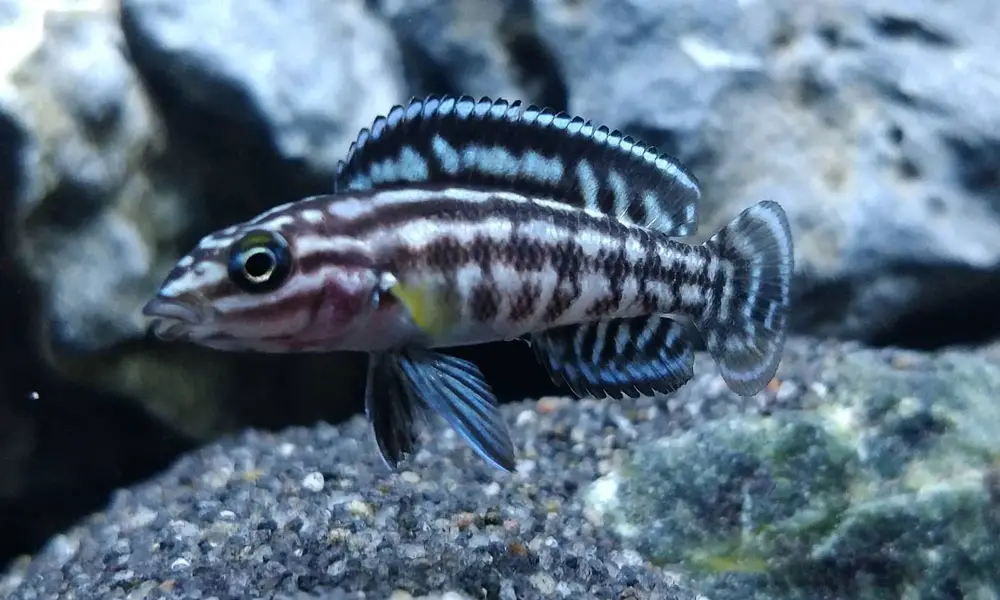
Marlieri Cichlid is best-known among tropical fish-keeping enthusiasts for its unique and appealing appearance. It is a slender, torpedo-shaped fish with a checkered pattern, made of white spots in three or more horizontal rows.
The fish features continuous dorsal fins that remain edged with a thin light and black stripe. Their mouth is slightly downward-pointing, and they also have fan-shaped caudal fins. It also boasts blue highlights encircling the body. These species also feature a stripe under the eye area.
However, the color patterns might vary based on location in Lake Tanganyika from where they are collected. Some specimens have a black or white-colored body, while others might feature more white or more black patterns.
A number local variants are:
- J. marlieri “Gombe”
- J. marlieri “Burundi”
- J. marlieri “Magara”
- J. marlieri “Mboko”
- J. marlieri “Halembe”
- J. marlieri “Isanga”
- J. marlieri “Kala”
- J. marlieri “Kalambo”
- J. marlieri “Katoto”
- J. marlieri “Makobola”
- J. marlieri “Milima”
- J. marlieri “Rutunga”
- J. marlieri “Sambia”
Sexing is nearly impossible when Julidochromis marlieri are young.
Males have a lump-like smaller swelling on the neck as they grow to sexual maturity.
The best way to accurately determine the sex of Julidochromis marlieri is by looking at the genital papilla. In males, this structure is shorter and more pointed, while females will have longer genital papillae that are blunter at the end.
Julidochromis Marlieri (Marlieri Cichlid) Size
The average size of Julidochromis Marlieri can grow about 5.9 inches (15cm), making them one of the larger Julies. These species can sometimes attain a length of 6″ in the wild.
When in captivity, male Marlieri Cichlids are smaller and typically reach only 4 ¾ inches. Females, on the other hand, are a bit larger. The manageable size allows them to be easily maintained in a home aquarium.
Most Lake Tanganyika Cichlids are slow-growers. The Marlieri Cichlid is no different and can take up to 2 years to reach its full size.
Lifespan
The average lifespan of Marlieri Cichlid is about 5 years, but they can live up to 8 years if provided with proper care and diet.
Feed them a balanced diet and offer them optimal care to make them feel healthy and active in their new habitat. Skipping over the care might hinder their overall well-being while reducing their life expectancy.
Julidochromis Marlieri (Marlieri Cichlid) Care
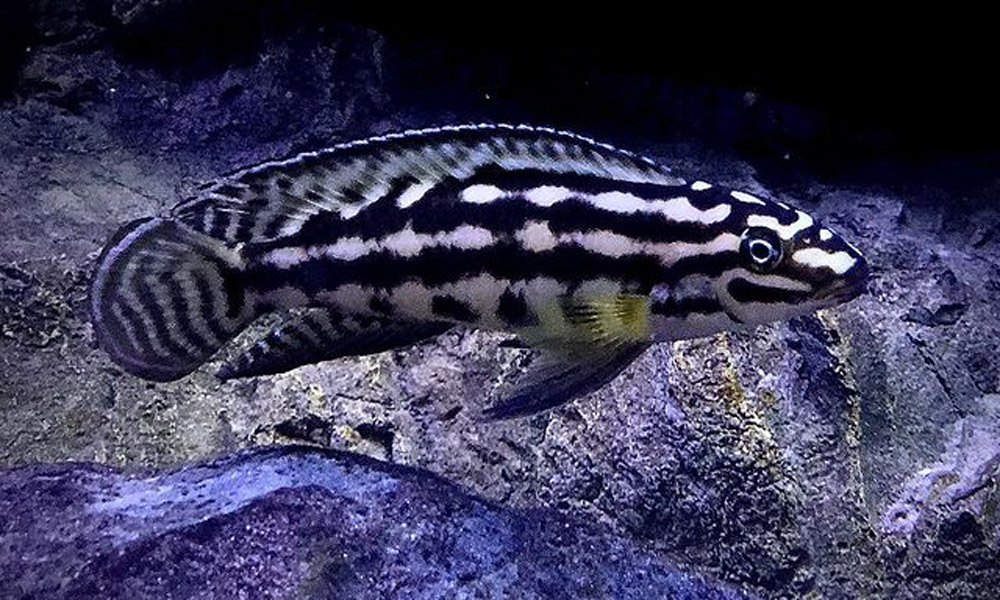
In the wild, Marlieri Cichlids are typical rock-dwellers, which spend most of their time in deep water and never swim close to the midwater as well as the surface. Sometimes, they may explore in the open water but only stay in the shadows of large rocks.
To provide them with a suitable environment, you need to create a rock cave setup in your aquarium. Make sure to use smooth, rounded rocks because Julies love to rub against them.
The best thing about Julidochromis Marlieri is that this cichlid is easy to care for, making it suitable for beginner aquarists.
They are fairly peaceful as long as it is kept with appropriate tankmates and in the right tank conditions. Additionally, these cichlids can adapt to an extensive range of water conditions and accept a wide variety of foods.
Here’re some of the essential Merlieri Cichlid care guidelines to follow.
Tank Size
J. Marlieri (Marlier’s Julie) is primarily a solitary species. Since they are fairly peaceful and don’t get too big, you don’t need a large tank to keep them happy.
A minimum of 30 gallons (36″ x 18″ x 12″) is sufficient to house a single pair. If you get some luck, a 33 gallons long (48″ x 12″ x 12″) aquarium is the best way to go.
If you plan on keeping a group of adults, then you need to increase the tank size to 75 gallons (48″ x 18″ x 21″) or more.
The goal is to give every fish enough space to swim and hide. Remember, they come from the world’s longest freshwater lake and can be a bit territorial.
Water Parameters
This fascinating fish inhabits the alkaline and oxygen-devoid waters of Lake Tanganyika. Lake Tanganyika is the second-deepest lake in the world; thus, the water chemistry is pretty stable. That means fish from this lake can be sensitive to fluctuations in temperature and pH.
To recreate their natural habitat, maintain the water conditions in your aquarium as close to their wild environment as possible.
Julidochromis Marlieri prefers alkaline and hard waters, so make sure to keep these parameters in check. Partial and regular water changes are suggested. Also, avoid changing the water chemistry much often.
These fish require good water movement and efficient filtration to increase oxygen levels. Below are the exact water parameters to consider before adding Marlieri Cichlid to your aquarium.
- pH: 7.5 – 9.0
- Water Temperature: 73 – 81°F (23 – 27°C)
- Hardness: 10 – 13 dGH
Because of their sensitivity to water conditions, a reliable aquarium test kit is always a good investment. This will help you determine if the water conditions in your tank are favorable for Julidochromis Marlieri.
- Contains one (1) API FRESHWATER MASTER TEST KIT 800-Test Freshwater Aquarium Water Master Test Kit,...
- Helps monitor water quality and prevent invisible water problems that can be harmful to fish and cause...
- Accurately monitors 5 most vital water parameters levels in freshwater aquariums: pH, high range pH,...
- Designed for use in freshwater aquariums only
- Use for weekly monitoring and when water or fish problems appear
Decor (Plants and Substrate)
An aquarium must have a sandy substrate to house these cichlids. You can also consider the rock piles in tank space to form barriers and caves. Offer them different piles of rocks to keep their aggression in check.
Fishkeepers can consider adding hardy plants if they are placing two or more species of rock dwellers in the aquarium. The gravels must be small in size; otherwise, their fry may get trapped.
Food
- New Life Spectrum is made from quality natural ingredients
- Extreme Color enhancement and vitality in your fish
- Made in the USA
Feeding Marlieri Cichlids is a hassle-free process. These fish are micro feeders and not carnivorous.
They usually feed on snails, microfauna, insects, sponges, and aufwuchs in the wild. However, you can offer them a mix of high-quality flakes, pellets, and other special foods in captivity to maintain the balance. Don’t forget to supplement their diet with water fleas, Mysis shrimps, brine, and cyclops.
It is suggested to feed them multiple times a day rather than giving them one large portion. Also, do not overfeed them.
Julidochromis Marlieri (Marlieri Cichlid) Tank Mates
J. Marlieri is a solitary species. They are fairly peaceful but territorial in nature. It’s best to keep a pair or in a group of several pairs in a species-only tank. Well, you can keep the singly or in colony tanks, though the former is less common.
They do well in community aquariums and can be housed with other Tanganyika cichlids of similar size and temperament. Avoid the other conspecific varieties and similar species to prevent hybrid strains from developing.
While they can live with other species, these cichlids cannot tolerate adults of their own offspring.
Besides, plecostomus and other bottom eaters are not recommended to be kept with Julidochromis Marlieri if you intend to breed as they will eat the fry at night.
Here are some possible Marlieri Cichlid tank mates that we recommend:
- Neolamprologus leleupi (Lemon Cichlid)
- Altolamprologus calvus (Calvus Cichlid)
- Cyprichromis leptosoma (Sardine Cichlid)
- Neolamprologus tretocephalus (Five-Bar Cichlid)
- Synodontis multipunctatus (Cuckoo Catfish)
Breeding
The Marlieri Cichlid breeding is straightforward, and pretty much anyone can do it. They are egg layers as well as substrate spawners. However, you do need to provide them with an appropriate environment to trigger the process.
In my humble opinion, what you need most to successfully breed Julidochromis Marlieri is patience.
This species is not strictly monogamous. The best way to start is by purchasing a group of 6 to 8 juvenile fish and letting them pair off naturally.
Once you obtain a breeding pair, remove other fish or move the pair to a breeding tank as they become extremely territorial when spawning. The breeding tank should be well decorated with plenty of porous rocks forming caves and crevices and a sandy substrate.
You can then slightly raise the temperature to the range between 75 – 78.8° F (24 – 26 C) and feed them live foods to help their condition for spawning.
Being one of the secretive cave spawners, the spawning process of Marlieri Cichlid is not as noticeable as other cichlid species, which is often very difficult to tell until the fry are free swimming.
The female Julidochromis Marlieri will lay eggs from 50 to 100 eggs on the wall or roof in a cave or crevice. Once the spawning is completed, the female will take care of the eggs whilst the male guards the territory.
After the eggs hatch, it’s best to siphon out most of the fry and put them in a separate 10-gallon fry tank or baby fish separator, leaving a few for the parents to care for. Fry without any yolk sac can be fed live baby brine shrimp.
The parents will guard their fry until they are around 1 inch long. After that, they will chase them away, so it is advisable to remove them before that happens.
As we mentioned earlier, these fish are slow growers, which may take 2 months or longer for the fry to reach 1 inch in length.
Final Thoughts
That’s it, readers! We hope now you have understood all the fundamentals of Julidochromis Merlieri care. These cichlids are widely applauded for their quirky behavior. They prefer swimming in the bottom areas and avoid coming up to the surface.
They are intelligent and have a unique swimming style, making them fun to observe. These species are an excellent choice for a cichlid keeper looking to try Tanganyikan cichlids. So, if you wish to add something out-of-the-box to your cichlids’ aquarium, consider Merlier’s Julie and make your aquarium a stunning centerpiece.
We tried to be as much precise as possible while explaining the Julidochromis Marlieri care guide. However, if you still have any doubts or queries, feel free to ask us in the comment section below.
Till then, happy fishkeeping.
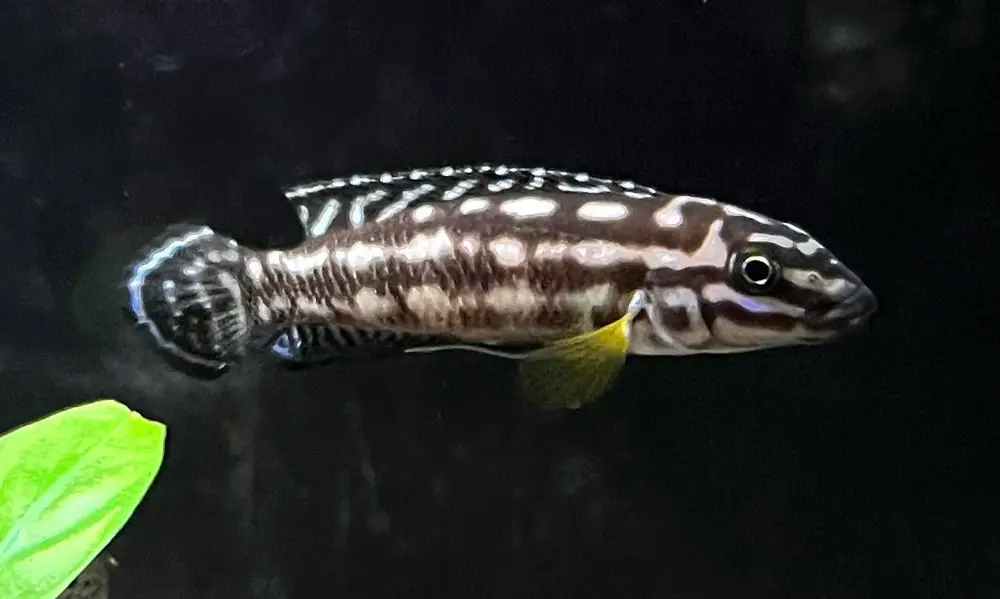



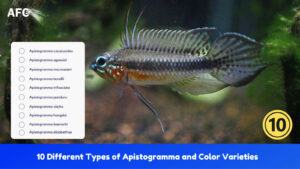
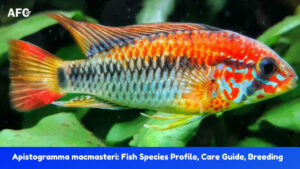
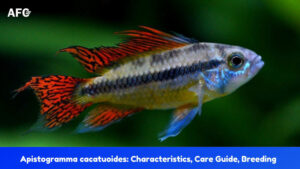

2 thoughts on “Marlieri Cichlid (Julidochromis Marlieri) Care Guide & Species Profile”
Great article outlining marlieri care! However it is the females of this species that gaurd the territory, while the males do most of the offspring care.
Hi, thank you for bringing that to my attention. In my experience, both parents of marlieri guard their offspring, but the male actually does the majority of the territory guarding around the spawning site like caves or crevices in the rock, while the female guards the eggs.